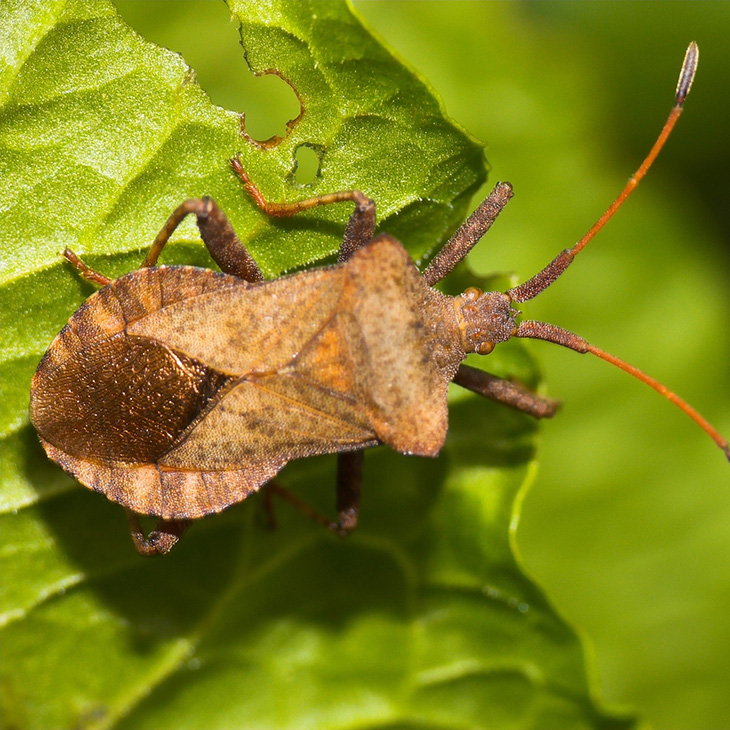
Squash bugs can put a damper on successful gardening
Friday, May 10, 2019
Gardeners know as the weather improves and the temperature goes up, they’re that much closer to fresh fruits and vegetables on the table. A couple of summertime favorites are squash and cucumbers.
Something that, unfortunately, can squelch the excitement is when the squash bugs arrive. You certainly didn’t invite them, but they often move in and wreak havoc in the garden, said David Hillock, Oklahoma State University Cooperative Extension consumer horticulturist.
“Squash bug is the most serious pest of squash and pumpkins in the United States and seems to be particularly troublesome in southern regions where it produces multiple generations per year,” Hillock said. “Their feeding behavior causes plants to wilt, yellow and often die back, as they transmit viral infections from plant to plant. Squash bugs are by far the insect we receive the most questions about. And, unfortunately, it is one of the most difficult to control.”
Squash bugs feed on summer squash, winter squash, pumpkins, melons and cucumber, all of which are cucurbit varieties. However, some cultivars are more susceptible than others to squash bug feeding and damage. So, what is a gardener’s first line of defense?
Hillock said gardeners should select varieties that are pest resistant. For example, yellow straightneck and yellow crookneck summer squash are highly susceptible to squash bug damage. Instead, try substituting zucchini for the yellow squash, as it has demonstrated higher tolerance to squash bugs in numerous studies.
“However, there is one zucchini cultivar called Cocozelle that has shown considerable susceptibility to squash bugs and should be avoided. Experiment with different cultivars of squash listed as resistant to determine which works best in your garden,” he said.
While cucumbers also are a favorite of squash bugs, cucumber beetles tend to be an even greater problem. Again, many cultivars are resistant or tolerant of cucumber beetle damage. Cucumber beetles are stimulated to feed by the chemical cucurbitacin, which is the chemical that gives some cultivars a bitter taste and causes gas in some people. Varieties listed as burpless or non-bitter contain little to none of the chemical compound and, therefore, are less attractive to cucumber beetles.
Selecting resistant cultivars is just one line of defense against squash bugs and cucumber beetles. However, these garden pests often require gardeners to implement multiple management strategies. Covering planted rows with floating row covers excludes both squash bugs and cucumber beetles from the plants, which in turn prevents these pests from laying eggs. The row covers must be tightly secured to the ground to exclude pests; bags of sand tend to be gentler on row covers than rocks, bricks or boards.
“Cucumbers and squash are insect pollinated crops, so we must remove the row covers once plants begin flowering. At that time, hand picking insects and smashing egg masses provides additional control,” Hillock said. “Another option is placing wooden boards near the plants. This provides a place where the squash bugs will congregate overnight. In the morning, you can lift the boards and easily remove the insects. Taking an extra precautionary step or two to thwart pests can help ensure a fruitful garden this season.”
MEDIA CONTACT: Trisha Gedon | Agricultural Communications Services | 405-744-3625 | trisha.gedon@okstate.edu
